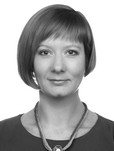Irkutsk state university beginner students’ physical development and physical fitness rating tests
Фотографии:
ˑ:
PhD K.V. Sukhinina1
D.K. Lobkova1
PhD I.I. Plotnikova1
PhD O.S. Dorzhieva2
1Irkutsk State University, Irkutsk
2Buryat State University, Ulan-Ude
The study was designed to analyze the physical development, including body mass, body length, body mass index, fat mass, muscle mass and total water mass) and physical fitness (tested by standard procedures) test rates in the Irkutsk State University beginner student population. Sampled for the tests were the first year students (n=539 including 183 males and 356 females). The male group was tested with the body mass and fat mass rates being under and above the norm, respectively, with the body mass rates in the both gender groups varying closer to the bottom limit of the norm. Total water mass was tested under the norm in the both gender groups. The physical fitness tests showed low flexibility rates and high test rates in the standing long jump test in the male group; and high test rates in the pull-ups, standing long jump and flexibility tests in the female group. This means that the female group was found better physically fit than the male one.
Keywords: beginner students, physical development, physical fitness, anthropometrical characteristics, body mass, body length, fat mass, lean body mass, water mass, test standards.
References
- Alimov A.V. Tekhnika i metodika antropometricheskikh izmereniy [Technique and methods of anthropometric measurements]. Nurse and PE instructor's pract. guide. Moscow: Medgiz publ., 1975. 30 p.
- Blinov D.S. Rezultaty analiza sostav tela studentov metodom bioimpedansometrii [Students' body composition bio-impedancemetry] Vestnik Mordovskogo universiteta. v. 26. no. 2. 2016. pp. 192–202.
- Blinova E.G. Rezultaty analiza antropometricheskih i bioimpedansometricheskikh issledovaniy u studentov goroda Omska [Anthropometric and bio-impedancemetry results for Omsk students] [Electronic resource]. Sovremennye problemy nauki i obrazovaniya. 2014. no. 3. Available at: http://www.science-education.ru/ru/article/view?id=13749 [date of access 11.03.2016]
- Guryeva A.B., Alekseeva V.A., Petrova P.G. Polovye osobennosti komponentnogo sostava tela i bioimpedansnykh parametrov u studentov meditsinskogo instituta SVFU [Sexual characteristics of body composition and bioimpedance characteristics of NEFU medical students]. Fundamentalnye issledovaniya. 2015. no. 1 (v. 5), pp. 929–932.
- Martin R.F. Kratkoe rukovodstvo po antropometricheskim izmereniyam [Brief guide to anthropometric measurements]. Moscow: Uchpedgiz publ., 1925. 54 p.
- Mikhaylova S.V. Kharakteristika komponentnogo sostava tela studentov [Characteristics of students' body composition]. Teoriya. Praktika. Innovatsii. 2016. no. 12.
- Nikolaev D.V., Smirnov A.V., Bobrinskaya I.G., Rudnev S.G. Bioimpedansny analiz sostava tela cheloveka [Bioelectrical impedance analysis of human body composition]. Moscow: Nauka publ., 2009. 392 p.
- Prokhodovskaya R.F., Sukhinina K.V., Maltseva T.V. Sotsialno-biologicheskie osnovy adaptatsii organizma k fizicheskoy i umstvennoy deyatelnosti [Socio-biological basics of body adaptation to physical and mental activity]. Fizicheskaya kultura: sport, zdorovye, obrazovanie [Physical culture: sports, health, education]. Proc. Intern. res.-pract. conf. ded. to the 100th anniv. ISU (June 22 2018). Irkutsk: ISU publ., 2018. ppp.76–79.
- Sindeeva L.V., Nikolaev V.G., Kazakova G.N. Komponentny sostav tela kak pokazatel fizicheskogo zdorovya molodezhi (na primere studentok meditsinskogo VUZa) [Body component composition as an indicator of physical health of young people (case study of medical students)]. Vestnik Krasnoyarskogo gosudarstvennogo pedagogicheskogo universiteta im. V.P. Astafyeva. 2012. no 1. pp. 398–401.
- Kholodov Zh.K., Kuznetsov V.S. Teoriya i metodika fizicheskogo vospitaniya i sporta [Theory and methods of physical education and sports]. Study guide. Moscow: Akademiya publ., 2003. 480 p.
- Cherenko V.A. Kolichestvennaya otsenka pokazateley fizicheskoy podgotovlennosti studentov [Quantitative assessment of physical fitness indices in students]. Vestnik sportivnoy nauki. 2018. no. 5. pp. 69–70.



